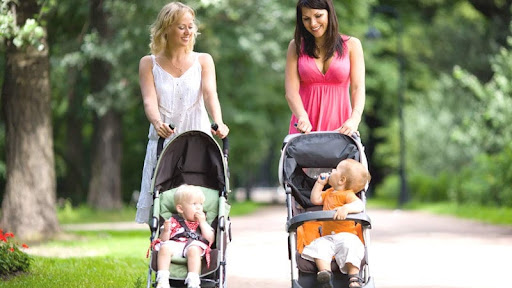
In the roughly 250 years since the Industrial Revolution, the world's population has exploded, paralleling the growth of wealth.
However, for the first time since the Black Death, the number of people on the planet could shrink before the end of this century.
The cause?
Not a surge in deaths, but a slump in births.
The Baby Bust
A "baby bust" has led to a global fertility rate collapse which could lead to profound economic consequences.
In 2000, the world's fertility rate was 2.7 births per woman, comfortably above the "replacement rate" of 2.1, ensuring population stability.
Today, it stands at 2.3 and falling.
The largest 15 countries by GDP, including the U.S., China, and India, all have a fertility rate below the replacement rate.
The implication of this trend is stark- the sound of children playing is being drowned out by the echo of walking sticks.
Countries like Brazil, Mexico, and Thailand are joining Japan and Italy in becoming rapidly aging nations.
By 2030, over half the inhabitants of East and South-East Asia will be over 40.
As the old pass away and aren't fully replaced, populations are likely to shrink.
Outside Africa, the global population is forecast to peak in the 2050s and end the century smaller than it is today.
A shrinking population presents significant economic challenges
The most immediate problem is supporting the world's retirees.
The ratio of workers to pensioners is plummeting, placing substantial pressure on younger generations to support older ones.
The implications are higher taxes, later retirements, lower real returns for savers, and potential government budget crises.
A smaller youth population also hampers innovation.
Young people are typically more creative problem-solvers, driving change and breakthrough inventions.
Older societies, however, tend to be less enterprising and less comfortable taking risks.
As societies age, they may become more resistant to pro-growth policies, suppressing productivity growth and creating a major missed opportunity.
Is this really a crisis?
While it's tempting to view low fertility rates as a crisis, it’s also worth looking at the flip side and that the underlying causes of this trend are often positive.
As societies become richer, they tend to have fewer children.
The suggestions to increase fertility, such as promoting traditional family values or encouraging more immigration, may not be effective solutions.
Many suggest immigration as a solution, and that’s obviously what Australia is doing.
Immigration is already at a record high in the rich world in general, and we know that Australia’s housing markets currently can't cope with the surge in immigration.
Despite immigration in the rich world being at a record high, the global nature of the fertility slump means that by mid-century, the world could face a dearth of young educated workers unless something changes.
According to some economists, one potential solution could lie in developing countries.
By improving education in rural areas of countries like China and India, and across Africa, we might boost the supply of young, educated workers.
Yet, the challenge is substantial, as the development process tends to lead to lower fertility rates.
Maybe Artificial Intelligence is the answer?
Ultimately, the world will have to make do with fewer youngsters.
Fortunately, advances in AI could help offset the impacts of a shrinking youth population.
AI could increase productivity, generate new ideas, and even reduce the need for human labour in caring for the elderly.
If technology can help humanity overcome the baby bust, it will fit the historical pattern of unexpected productivity advances averting demographic crises.
However, this is not to suggest that the problem will solve itself.
The demographic shift we are witnessing requires thoughtful policy, strategic planning, and a willingness to adapt.
As the world navigates this baby-bust economy, the stakes are high, and the time to act is now.
As the world navigates this baby-bust economy, the stakes are high, and the time to prepare and adapt is now.

The baby bust doesn't have to be a catastrophe, especially for Australia
Throughout history, human societies have shown remarkable resilience and adaptability.
The baby bust presents us with a unique challenge, but it's a challenge we can overcome with the right mindset, policies, and technologies.
Technological advancements, particularly in AI, can play a significant role in overcoming some of the challenges brought about by the baby bust.
Automation and AI could drive productivity, lessen the burden on the shrinking workforce, and potentially offset the decline in human capital.
Robots and AI could also assist in caring for an aging population, reducing the demand for human caregivers.
Education can also be a powerful tool in addressing the baby bust.
We will also need to reassess our social and economic structures to better align with the reality of lower fertility rates.
Only recently it is being recommended that the pension age in Australia is gradually increased to 70 years.
It makes sense as we're living longer that we revisit retirement ages, pension schemes, and social support systems as this could help mitigate the strain on the dwindling working population.
We also need to promote policies that encourage innovation and economic growth, as these can help offset the economic consequences of an aging population.
So while the baby bust will be a significant global phenomenon that is likely to carry profound economic implications, Australia is in a better position than most countries to navigate this demographic shift successfully.
Of course, like the rest of the world, Australia is also experiencing the effects of an aging population and declining fertility rates.
By 2050, 25% of Australia's population is expected to be 65 years or older, compared to 15% in 2017.
However, our high rate of immigration and the fact that we are importing more and more young people at family formation age will moderate some of the effects of an aging population.
As we move into this new era, we must remember that change is not only inevitable but also an opportunity for growth, innovation, and progress.
